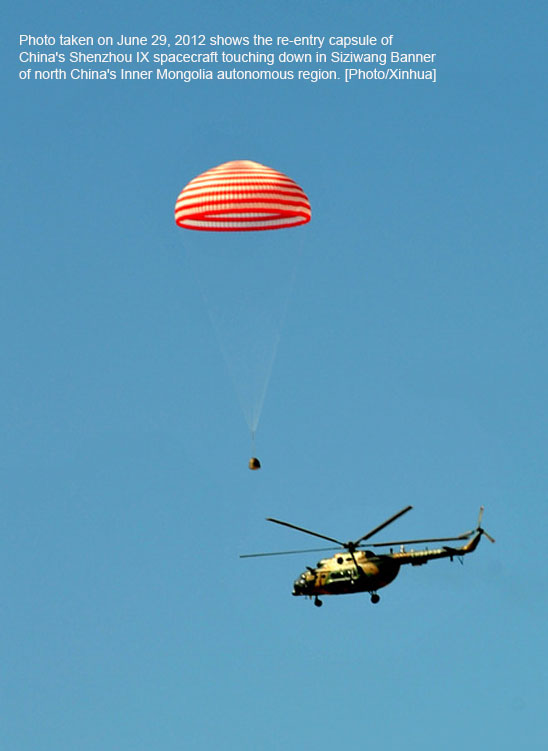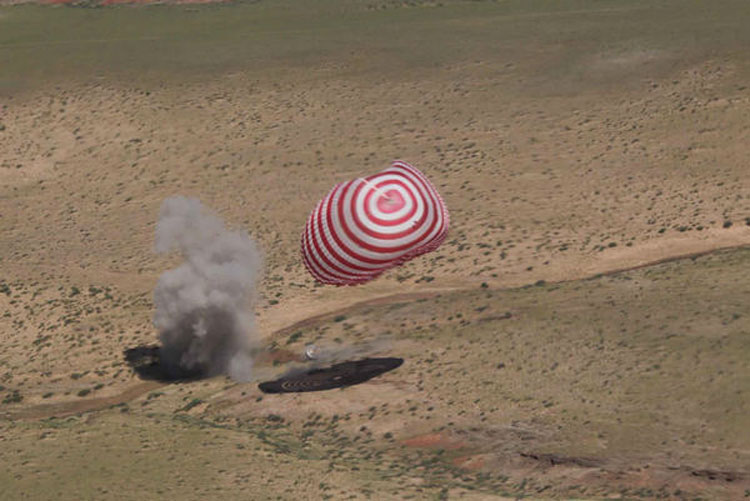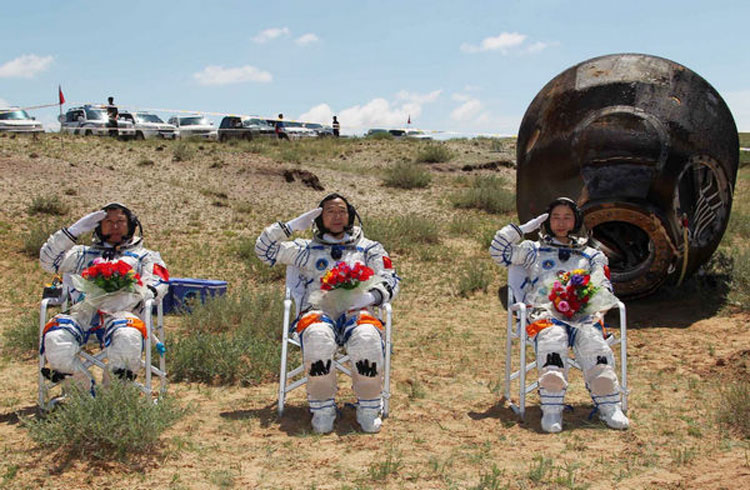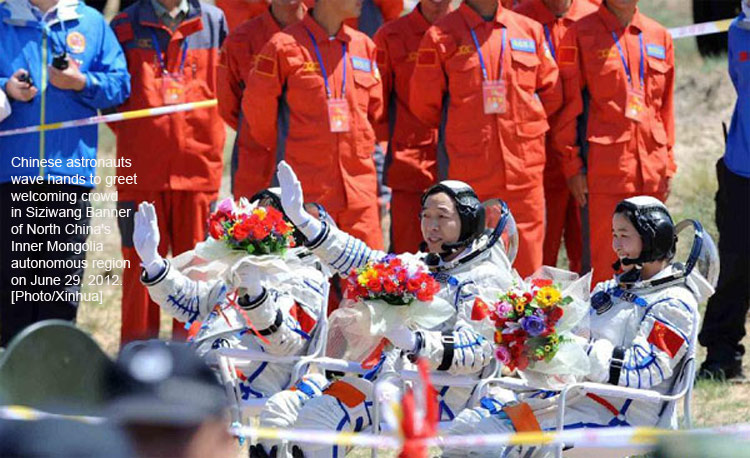BEIJING - China's manned space docking mission between Shenzhou IX spacecraft and Tiangong-1 lab module has achieved a complete success, announced Chang Wanquan, chief commander of China's manned space program here Friday.
The Shenzhou IX spacecraft has landed safely at the main landing area in northern China's Inner Mongolia autonomous region and all three astronauts aboard are in good physical condition, said Chang.
Three astronauts who fulfilled China's first manned space docking safely returned to earth on Friday morning.
The return capsule of Shenzhou IX spacecraft touched down in north China's Inner Mongolia Autonomous Region as planned.
Medical staff entered the capsule and reported the astronauts were in good conditions.
While in the capsule, the astronauts reported to the command center "We have returned, and we feel good."
Jing Haipeng, commander of the Shenzhou IX crew, was the first to come out of the return capsule, followed by Liu Wang and the country's first woman astronaut Liu Yang.
The three will fly to Beijing after taking physical examinations in ambulance helicopters at the landing site.
Chinese leaders including Premier Wen Jiabao, He Guoqiang and Zhou Yongkang arrived at the Beijing Aerospace Flight Control Center Friday morning to watch the return of Shenzhou IX spacecraft.
China's Premier Wen Jiabao on Friday delivered a congratulatory note from the central authorities, celebrating the successful landing of the country's Shenzhou IX spacecraft.
The central authorities express congratulations to astronauts who successfully completed this mission and all people engaged in the mission, reads the note sent by the Central Committee of the Communist Party of China, the State Council and the Central Military Commission.
The successful rendezvous and docking between the target orbiter Tiangong-1 and the Shenzhou IX spacecraft marks a significant breakthrough in China's space docking technology, and it also marks decisive progress in fulfilling the second strategic target of China's manned space program, reads the note.
On June 24, the three Chinese astronauts successfully completed a manual docking between the Shenzhou IX spacecraft and the orbiting Tiangong-1 lab module, the first such attempt in China's history of space exploration.
The success of the procedure shows that China has completely grasped space rendezvous and docking technologies and the country is fully capable of transporting humans and cargo to an orbiter in space, which is essential for the country's plans to build a space station around 2020.
The spacecraft and the space lab were previously joined in an automated docking on June 18, after the three astronauts were sent into space aboard the Shenzhou IX on June 16 from a launch center in northwest China's Gobi desert.
The three astronauts also conducted a series of scientific tests during their 13 day space flight.
Quelle: CHINADAILY




5594 Views

